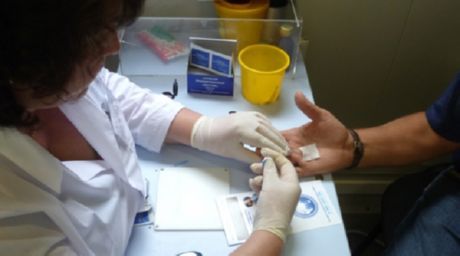Medical expert of the article
New publications
Diabetes mellitus is triggered by an iron transfer protein
Last reviewed: 01.07.2025

All iLive content is medically reviewed or fact checked to ensure as much factual accuracy as possible.
We have strict sourcing guidelines and only link to reputable media sites, academic research institutions and, whenever possible, medically peer reviewed studies. Note that the numbers in parentheses ([1], [2], etc.) are clickable links to these studies.
If you feel that any of our content is inaccurate, out-of-date, or otherwise questionable, please select it and press Ctrl + Enter.
Scientists and doctors have been trying to figure out the causes of diabetes for many years. Researchers from the University of Copenhagen have found that increased activity of one specific protein that transports iron in the body leads to the destruction of beta cells that produce insulin.
The results of this study were recently published in the journal Cell Metabolism.

Almost 300,000 Danes suffer from diabetes. 80 percent of them have type 2 diabetes, which is called a lifestyle disease. The number of people with diabetes doubles every decade. Treatment of this disease costs Danes 86 million Danish crowns daily (one Danish crown is approximately equal to 1.4 hryvnia).
Diabetes occurs when the beta cells in the pancreas do not produce enough insulin to meet the body's needs. A specific iron-transporting protein causes beta cell dysfunction, according to new research.
"Iron is an extremely important mineral for healthy functioning of the body. It is a component of many enzymes and proteins. For example, it can be found in the red pigment of the blood, which carries oxygen. But at the same time, iron can contribute to the creation of toxic oxygen radicals. Increased iron levels in cells can lead to tissue damage and disease. We found that increased activity of a certain iron transporter harms beta cells. When we completely removed this iron transporter from the beta cells of genetically modified mice, they became resistant to diabetes," explained Professor Thomas Mandrup-Poulsen of the Department of Biomedical Sciences, Faculty of Health and Medical Sciences, University of Copenhagen.
Together with Professor Christina Ellervik and Henrik Birgens, Mandrup-Poulsen had previously discovered a link between high iron levels in the body and the risk of diabetes based on large-scale experimental studies. Now, a team of Danish scientists has succeeded in discovering the first link between diabetes and an iron transporter in the body, which is most likely the root cause of the increased risk of the disease.
"We need to conduct clinical studies that would confirm that changing the iron content in the body can reduce the risk of diabetes. Only then can we advise people who are at risk not to take iron-containing drugs and recommend treatment aimed at reducing the amount of iron in the body," Thomas Mandrup-Poulsen said.


 [
[